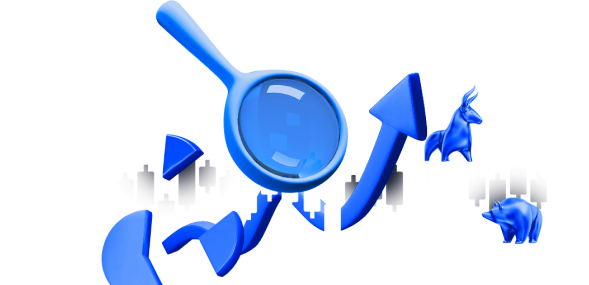TL;DR
Crypto trading requires careful analysis and informed decision-making. Charting tools and indicators play a crucial role in providing valuable insights into market trends and potential opportunities. In this article, we explore various tools and indicators used by experienced traders, including candlestick patterns, moving averages, RSI, Bollinger Bands, Fibonacci retracement, and volume analysis. Each tool offers unique perspectives, and combining them can enhance trading decisions. Remember, no single indicator guarantees success, so practice, discipline, and continuous learning are key to mastering the art of crypto trading.
Introduction
Crypto trading has rapidly gained popularity in recent years, attracting both seasoned investors and newcomers seeking to capitalize on the exciting world of cryptocurrencies. As with any form of trading, success in the crypto market requires careful analysis and informed decision-making. One essential aspect of this process is the effective use of charting tools and indicators, which provide traders with valuable insights into market trends and potential opportunities. In this article, we delve into the art and science of crypto trading, exploring the various charting tools and indicators commonly used by experienced traders. Drawing upon my own experiences and expertise, I share fresh perspectives and strategies to help you master this crucial skill.
I. The Candlestick Chart: Unveiling Market Sentiments
In the realm of crypto trading, the candlestick chart is a staple tool that provides a visual representation of price movements over a specific time period. These charts consist of individual “candles,” each representing a trading session, typically displayed in intervals of minutes, hours, or days. The body of the candle reflects the opening and closing prices, while the wicks (or shadows) illustrate the price range within that session.
To truly understand the market sentiments behind the candlestick chart, it’s important to delve deeper into the different types of candlestick patterns. Let’s explore a few:
The Bullish Engulfing Pattern: A Story of Strength
Imagine a majestic bull charging through a crowd, overpowering the forces of the bear. The bullish engulfing pattern paints a similar picture on the candlestick chart. This pattern forms when a smaller bearish candle is entirely engulfed by a subsequent larger bullish candle. It suggests a reversal of the previous downtrend and signals the emergence of bullish momentum. When identified alongside other indicators, such as a surge in trading volume or a bullish divergence, this pattern can offer a compelling entry point for traders seeking to ride the wave of a potential uptrend.
The Doji: A Tale of Market Indecision
In the vast realm of trading, indecision can be both a blessing and a curse. The doji candlestick pattern portrays this state of uncertainty, representing a trading session where the opening and closing prices are virtually identical. The resulting candlestick resembles a cross or a plus sign, reflecting a balance between buyers and sellers. While a single doji may not reveal much on its own, it becomes more significant when found in certain contexts. For instance, a series of doji candles clustered together may indicate an impending trend reversal, highlighting the need for caution and further analysis.
The Hammer and the Hanging Man: A Lesson in Reversals
Imagine witnessing a blacksmith hammering a piece of metal, shaping it with precision. The hammer and hanging man candlestick patterns share a similar story on the chart, indicating potential reversals in the prevailing trend. The hammer pattern forms after a downtrend and signifies a potential bullish reversal. It consists of a small body near the top of the candle and a long lower wick, resembling a hammer. Conversely, the hanging man pattern appears after an uptrend and suggests a bearish reversal. It features a small body near the bottom of the candle and a long upper wick, resembling a hanging man. These patterns, when confirmed by additional factors such as support and resistance levels or confirmation from other indicators, can provide traders with valuable entry or exit signals.
II. Moving Averages: Identifying Trends and Support/Resistance Levels
Moving averages are another essential tool for analyzing price trends and identifying potential support and resistance levels. A moving average is calculated by averaging the prices of an asset over a specific time period. The resulting line smooths out price fluctuations, making it easier to identify the overall trend.
There are different types of moving averages, including the simple moving average (SMA) and the exponential moving average (EMA). The SMA gives equal weight to all data points within the selected time period, while the EMA assigns more weight to recent prices, making it more responsive to current market conditions.
Traders often use two or more moving averages to gain a comprehensive view of the market. For example, the crossover strategy involves plotting a short-term moving average (e.g., 20-day SMA) and a long-term moving average (e.g., 50-day SMA) on the same chart. When the short-term moving average crosses above the long-term moving average, it generates a bullish signal, indicating a potential upward trend. Conversely, when the short-term moving average crosses below the long-term moving average, it generates a bearish signal, suggesting a potential downward trend.
Moving averages can also act as dynamic support and resistance levels. During an uptrend, the moving average line may provide support, with prices bouncing off it as a signal to buy. In a downtrend, the moving average line may act as resistance, with prices being rejected from it as a signal to sell or short.
III. Relative Strength Index (RSI): Gauging Overbought and Oversold Conditions
The Relative Strength Index (RSI) is a popular momentum oscillator used to assess the strength and speed of price movements. It ranges from 0 to 100 and is typically displayed below the price chart. The RSI compares the magnitude of recent gains to recent losses, indicating whether an asset is overbought or oversold.
An RSI reading above 70 is considered overbought, suggesting that the asset may be due for a price correction or a reversal. Conversely, an RSI reading below 30 is considered oversold, indicating that the asset may be undervalued and due for a potential price bounce or reversal.
Traders often use the RSI to identify potential entry or exit points. For example, if the RSI crosses above the 30 level from below, it generates a bullish signal, suggesting a potential upward movement. If the RSI crosses below the 70 level from above, it generates a bearish signal, indicating a potential downward movement.
It’s important to note that the RSI is most effective in ranging or sideways markets. In trending markets, the RSI may stay in overbought or oversold territory for extended periods, making it less reliable as a standalone indicator.
IV. Bollinger Bands: Assessing Volatility and Potential Breakouts
Bollinger Bands are a versatile tool that helps traders assess volatility, identify potential breakouts, and spot periods of consolidation. The indicator consists of a simple moving average (usually 20 periods) in the middle, accompanied by an upper band and a lower band. The upper and lower bands are calculated by adding and subtracting a multiple of the standard deviation from the moving average, creating a channel around the price.
In periods of low volatility, the Bollinger Bands contract, and the distance between the bands narrows. This indicates a period of consolidation or ranging market conditions. Conversely, in periods of high volatility, the bands expand, and the distance between the bands widens, signaling potential breakouts or strong price movements.
Traders often look for price movements that penetrate the upper or lower bands, which can indicate potential trend reversals or continuation. For example, if the price breaks above the upper band, it may suggest a bullish breakout, while a break below the lower band may suggest a bearish breakout. However, it’s important to consider other factors and use additional indicators to confirm these signals before making trading decisions.
V. Conclusion
Technical analysis is a valuable tool for traders to analyze price patterns, identify trends, and make informed trading decisions. The indicators mentioned in this response are just a few examples of the many tools available to traders. It’s important to understand that no single indicator can guarantee accurate predictions, and using multiple indicators and confirming signals from different sources can increase the probability of making successful trades.
It’s recommended to combine technical analysis with fundamental analysis, market sentiment, and risk management strategies to develop a well-rounded approach to trading. Additionally, practicing on historical data and utilizing demo accounts can help traders gain experience and refine their skills before engaging in live trading with real funds.

















